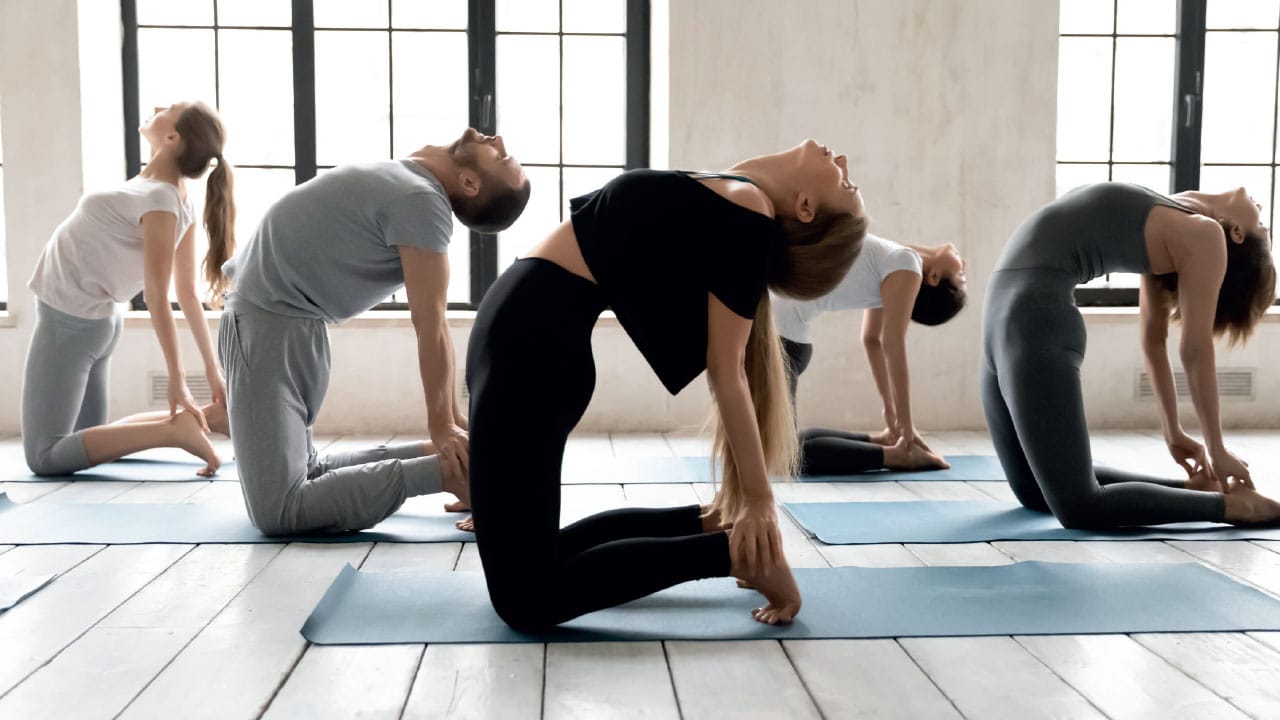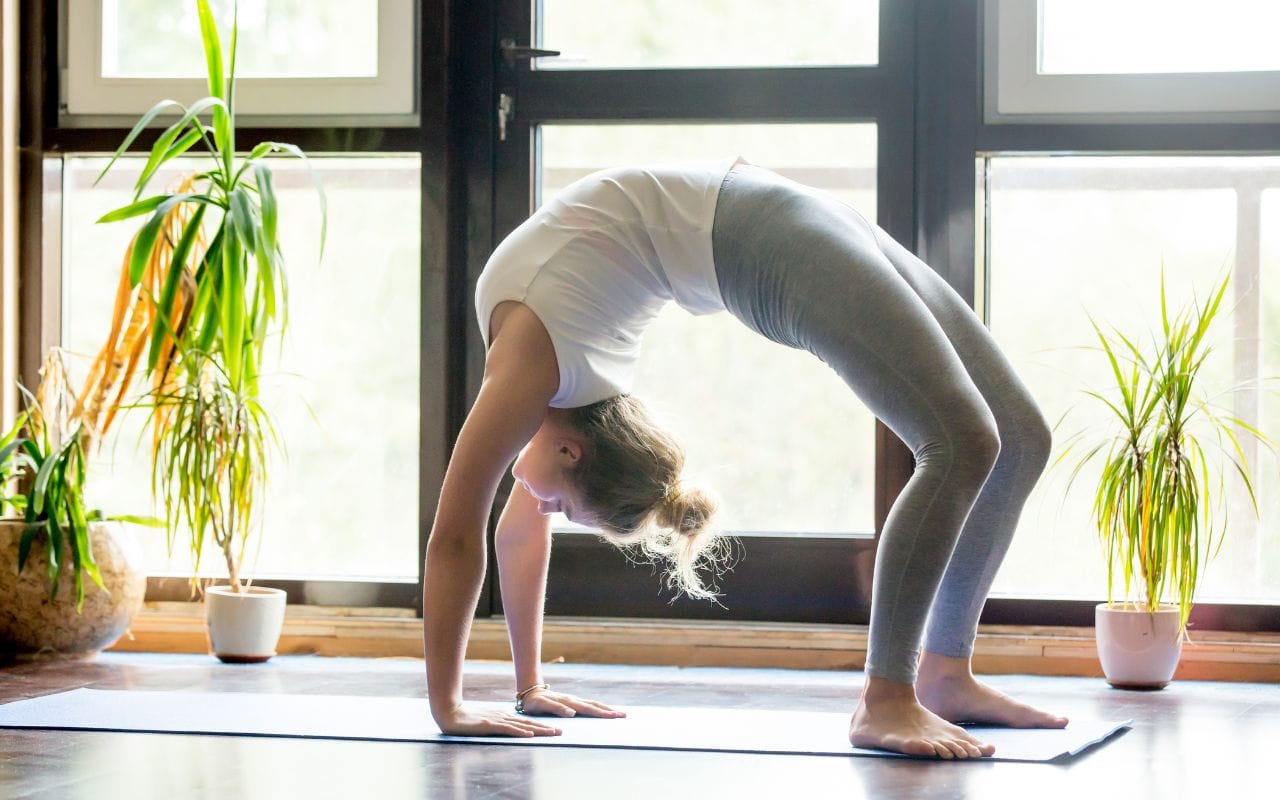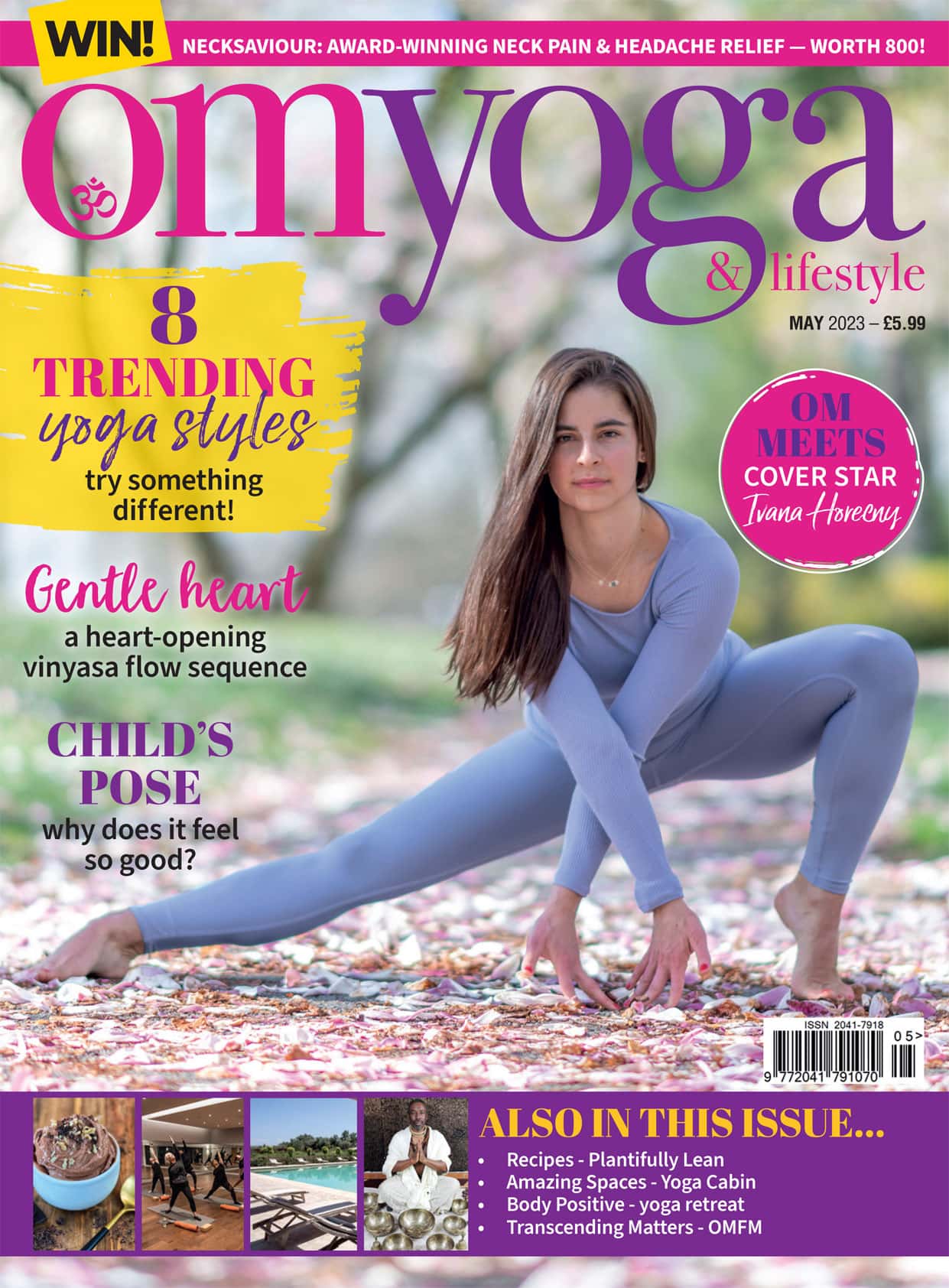
Moving to the back and finding the heart
Backbending is at the heart of yoga practice because it helps open and align the six major chakras along the spine – but simple backbends are all that is necessary, writes Chris Livanos. A well-designed practice involves not simply bending the spine, but opening the entire front body, including muscles such as the hip flexors, which are often neglected
"You are only as young as your spine is flexible."
When I first heard this saying, I figured I must be about 500 years old. That would make me a vampire, which would be kind of cool if true, but the saying is misleading at best. It has nonetheless found its way into the yoga community. In general, most yoga teachers and practitioners have the wisdom to realise you do not need extreme flexibility to have a strong yoga practice, but somehow this quote finds its way into the mouths and keyboards of people who ought to know better. Imagine substituting ‘spine’ with ‘hamstrings’, ‘shoulders’, or any other body part. If anyone said such a thing, wiser and more experienced yogis would inform them — gently, I hope — that overemphasis on flexibility detracts from yoga’s value as a practice for everyone regardless of body type or skill level.
The quote’s implicit ageism is another reason it should go away. Yet the myth has some kernels of truth behind it which are worth exploring to understand the real importance of having a basic level of spinal mobility that will allow you to move with comfort and ease throughout your life.
The major chakras are along the spine
Postural yoga developed out of Indian tantric practices geared towards opening and aligning the chakras. While there are hundreds of chakras throughout the body, the most essential ones are six found along the spinal column and a seventh at the crown of the head.
The centrality of the chakras is why yoga emphasises the spine and why a saying that glorifies backbending can make its way into yoga circles more readily than a similar saying about other feats of flexibility.
But overemphasis on flexibility is still misguided. Simple back-strengthening exercises such as cobra, locust, and bridge are sufficient for aligning the chakras; and they are also sufficient to ensure comfort and mobility for the majority of yoga students, who come to public classes for a variety of reasons and may or may not be interested in the workings of the subtle body.
Yoga and Pilates
The quote equating youth with spinal flexibility is sometimes attributed to Joseph Pilates, a man for whom I have great respect. I have taught yoga in Pilates studios, and one of the reasons I enjoy it is because Pilates practitioners tend to value functional mobility. His words were, “the only real guide to your true age lies not in years or how you THINK you feel but as you ACTUALLY are as infallibly indicated by the degree of natural and normal flexibility enjoyed by your spine throughout life.”
While I think we should ditch talk of “true age” altogether as contributing to ageist bias, the key words are “natural and normal flexibility.” This can get lost in the translation from Pilates to yoga, where flexibility is often taken to extremes. Joseph Pilates did not perform poses that require extreme flexibility. One of the many benefits of his method is that, like yoga, it reverses the tendency of both the lumbar spine and the thoracic spine to become more curved over time, leading to a stooped posture.
I hope no one honestly thinks you are ageing unnaturally unless you can bend over backward and touch the soles of your feet to the top of your head, but it can come across that way when “natural and normal flexibility” gets turned into “you are only as young as your spine is flexible,” and then transferred from Pilates into yoga, where deep backbends are not uncommon.

What does 'backbending' really mean?
Backbends are one of the basic categories of yoga asanas. They could even be considered the most essential poses since they directly involve the six principal chakras along the spinal column. A proper understanding of what backbending means is at the very heart of yoga. While the backbends that help open and align the six major chakras (the seventh being more related to meditation than asana) involve some degree of spinal flexibility, very few people have extremely flexible spines, and no one needs to.
The lumbar spine, and especially the thoracic spine, are not built to move that much compared to a joint like the shoulder or the wrist. Granted, circus contortionists and the like develop tremendous flexibility in the spine, but that is a vanishingly small segment of humanity.
Even highly advanced yoga practitioners, capable of doing all the classic postures such as scorpion handstand, often have only moderate flexibility in the spine itself. Look carefully at their practice, and you will usually observe a deep but even opening throughout the whole front body, with the hip flexors and shoulders doing as much or more than the back itself.
The word ‘back’ in ‘backbend’ is best understood as a reference to the direction, not to the body part. You are not so much bending your back as bending toward the back.
Skilled teachers will often avoid saying ‘backbend’ and use terms like ‘heart opener’ or ‘back strengthener’, which are less likely to be misconstrued. When I teach or study yoga in Spanish, I am grateful that the term for backbend is ‘flexión hacia atrás’, literally, ‘bend towards the back’. Understood this way, the backbending family of poses includes not only those that strengthen the back and open the heart chakra but also those that relieve tightness in the hip flexors, which often goes overlooked as a cause of back pain and postural problems.
Finding the courage to open the heart
Backbends are the type of pose that have caused me the most anxiety. They can still scare me in a way handstands do not. I realised early in my practice this is because I’m fairly used to falling down but not that used to opening up.
It helps me to think of the mythology behind names of some fundamental backbends — bow and wheel, dhanurasana and urdhva dhanurasana in Sanskrit — and upward facing bow. I think of the great archer Arjuna’s hesitancy to pick up his bow and complete the task at hand in the Bhagavad Gita. In this great Hindu scripture, the hero is overcome by doubt and anxiety about the rightness of his actions just as he is about to go into battle. He was able to fulfill his sacred purpose only after being reminded of his own inner divinity.
Sometimes I need to reflect on the many benefits yoga has brought me and the sheer joy I feel in my practice. This works best when my reflection is not clouded by language that causes anxiety around perceptions of age and flexibility.
Chris Livanos is a vinyasa instructor (ERYT-200) and a professor of South Asian Literature in Madison, Wisconsin, where he lives with his wife Michelle, their dog Rosie Mae and their guinea pig Lenny. Visit: panthayoga.com




